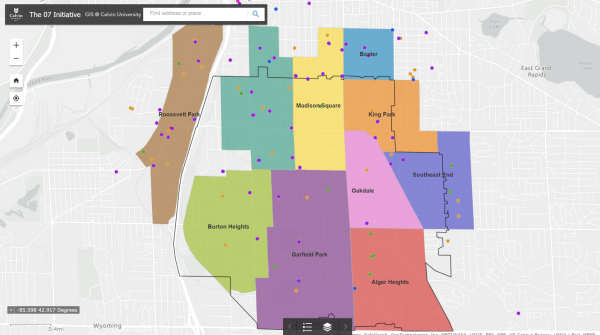Snowy owls flock to West Michigan
The snowy owl, a bird native to the Arctic region, is once again making appearances in West Michigan. Several sightings of the bird have been reported and have prompted curiosity as to why the bird is flying so far south.
Janet Staal, educator at Blandford Nature Center in Grand Rapids, commented on the increase in sightings of snowy owls.
“It is common to have a few sightings each year,” Staal said. “Recently, the increased number of sightings indicate a higher population of snowy owls migrating to West Michigan.”
Recent bird watching data has also indicated a significant increase in snowy owl sightings.
Ebird.org and Cornell University’s Feeder Watch track the presence of snowy owls throughout the United States and have both reported increases in sightings of snowy owls.
The movement of snowy owls to southern regions is thought to be a result of a shortage in food supply as well as unusual weather in the Artic, according to several sources, including the National Audubon Society.
Tom Moelker, of Moelker Orchards in Grand Rapids, recently spotted a snowy owl on his property.
“I had not seen a snowy owl on the farm before,” Moelker said. “The owl was originally perched on a large overturned stump in the corner of an open field.”
After spotting the snowy owl, Moelker decided to capture the image.
“I photographed it from about 25 yards away,” Moelker said, “and after a couple of minutes, it flew across the field slowly and perched on one of the posts that is part of a trellis system built to support young apple trees.
“He did not seem too nervous about me being there, and he stayed on the post after I left.”
In addition to serving as an attraction for birdwatchers, the snowy owl is beneficial to West Michigan’s ecosystem, according to Staal.
“In order to sustain balanced ecosystems, it is important to have top level predators that help control lower level populations of animals, rodents and other birds,” Staal said. “All birds of prey serve a vital role within the ecosystem to control rodent populations.”
Staal also discussed the benefits of snowy owls on the community.
“At a time when people are spending more hours than ever indoors, and everyone seems attached to a screen, citizens make decisions each day that have an impact on the natural world,” she said.
“An awareness of the snowy owls in our community invigorates our relationships with nature.”
Individuals can typically spot snowy owls in vast open spaces, fields or farmlands. The owls typically prefer to perch on light posts or fences rather than in trees, Staal said.
Individuals can be on the lookout for snowy owls in West Michigan throughout the rest of the winter.







